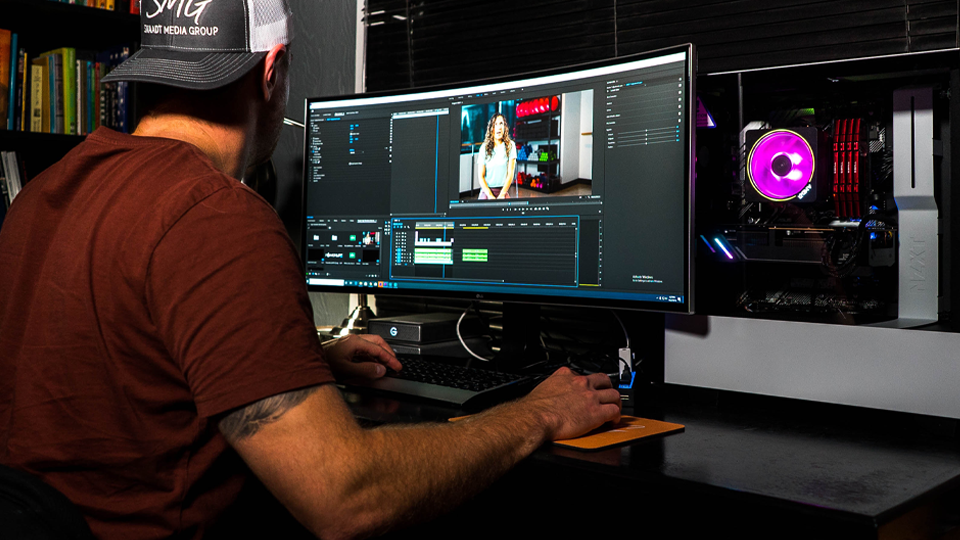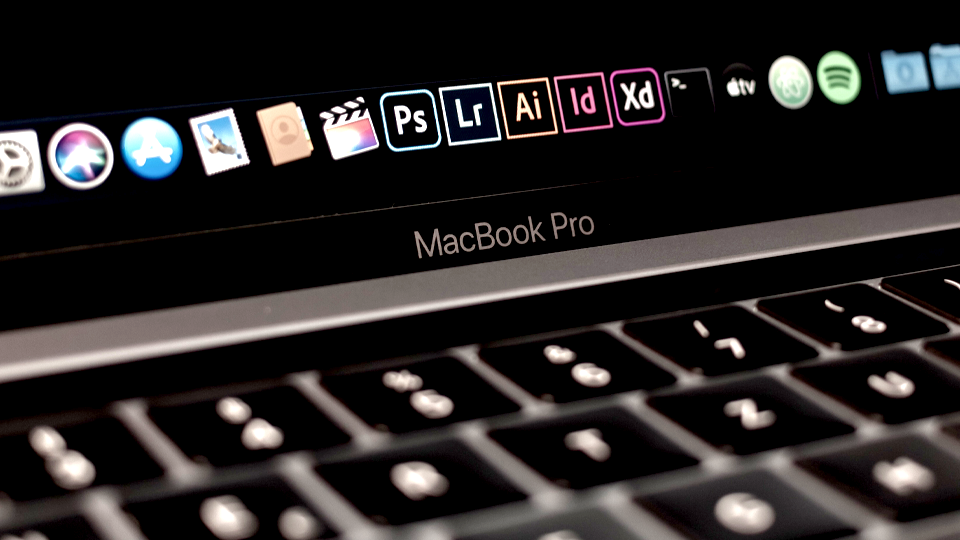Behind the scenes with iDENTITY's Jay Torres: 30 Years in Hollywood

Samuel Taggart

10 Minutes

Jay Torres, co-founder and CEO of iDENTITY originally wanted to be an actor. It shows: He’s a storyteller through-and-through, never shy to reveal a snippet from his career in Hollywood, already spanning over 30 years. Torres is a pioneer in the world of filmmaking, not only as a Veteran and Latino business owner, but as someone who has risen up and around and through the ranks, from Avid edit bays to next-gen movie sets, with genuine focus and skill.
Intertwining technical editing expertise, a deft personal touch, and a go-getter, do-it-yourself attitude, Torres has taken every seat in the house, including director, producer, editor, and any other role you can conjure up. He started his journey building out an edit bay for a friend; next, he became a music video editor, earning his stripes on projects for Aerosmith, Metallica, Bon Jovi, MC Hammer, and Salt N Pepa. Ever heard of ‘em?
His portfolio of work and his rolodex of clients and colleagues also speaks for itself: he’s created custom content for household brands like Reebok, FootLocker, Skechers, and DirecTV; he’s worked alongside top actors such as Christopher Walken, Dwayne Johnson, Eva Longoria, and Jennifer Garner; top athletes, Michael Phelps, Nancy Kerigan, and Sanya Richard-Ross; he helped spearhead Vudu’s first-ever original content, a TV spin-off of the popular movie, "Mr. Mom"; and he’s even worked for Universal Studios to create eye-popping, award-winning visual illusions for its Orlando theme park.
This article features anecdotes from Torres’ time in the business, straight from the man himself. Part storytelling, part interview, here's a crash-course in Hollywood history...
A peek into the world of Jay Torres
Being a director was my second choice—I wanted to be an actor! They told me I had the face for radio, so that ended my career. [Laughs] I initially got the chance to help my buddy set up his edit bay. I started off doing promos for New World Pictures and Disney. After that, I got into music videos, where I really elevated my game, and had the chance to work with big directors. Wayne Isham was the first… he [did] all the Bon Jovi videos; Motley Crue; everyone from Janet Jackson to Metallica. I wound up editing concert films for him for the Moscow Music Peace Festival; Bon Jovi; and “Enter Sandman,” which was a big one. Then I started working under Marty Callner, doing Aerosmith videos…

The early Avid days and music videos
I was editing on videotape systems, three-quarter-inch tape editing—that's how I learned my craft. For the longest time, you couldn’t insert edit. Then I heard about Avid, and it was non-linear, involved computers… the technology was very new. The resolution of the images was super low—especially for music videos, you had to squint to see the lip-sync—but despite its limitations, there were benefits. I knew it was the future.
I was the first editor to use Avid in Los Angeles for a music video; for Rupert Wainwright, who directed all the MC Hammer projects. It was difficult because I didn't know how to “dissolve” in Avid, and it was so different than linear editing. The Avid team ended up putting a machine in my house, so I could work on projects out on the West Coast; at the time, I was working on a behind-the-scenes cut for MC Hammer’s, “Here Comes the Hammer” music video.
I wound up sticking with Avid, editing back-and-forth between non-linear. Then the director for Aerosmith [Callner] asked me to edit the music video, “Crying.” I told him, “If you want me to do it, I don't have time to do a linear edit.” He agreed—and that was about the time everyone went non-linear…

Starting iDENTITY, After Effects & digital editing
Several years before I started my production company, iDENTITY, in 2002, I had an editorial company called Fugitive. We bought an Avid machine around the same time we heard about a new product called After Effects... At the time it was still COSA After Effects. We used a primitive [Macintosh] Quadra, which was the graphics computer they offered. After Effects was later bought by Adobe; the product got better and the computers started getting faster. We wound up doing commercials. Since we were a small production company, we needed technology to help us to compete, so we initially edited with Avid and After Effects.
We created work for Skechers, DirecTV, and did a lot of projects in the commercial space. We were able to build a company using these tools because they were less expensive than the systems used by high-end post production houses. But we had to figure out how to get high-end video into Avid, 'cause they didn't have the processing cards to handle full-resolution.I figured out a way to use the Silicon Graphics Fire—that “million dollar box” everyone used at the time—to digitize our footage; it had a premium graphics input. Since it was a computer, I figured we could extract the data from it somehow, too. We used a program called DeBabelizer, which took the files, imported them onto a drive, and converted them into a QuickTime movie. We did it [that way] out of necessity.

iDENTITY had success as one of the first motion graphics, editorial, and production companies that did it all. We did a lot of green screen, and used After Effects for the compositing. As time passed, we constantly changed devices and technologies, from Avid to Final Cut to Adobe Premiere, where we ultimately landed. Now, [Davinci] Resolve is taking over because of its capabilities and speed. There's always some new technology for people to take advantage of…
Creating holograms for Universal Studios
At one point, we had an opportunity to work with Universal Studios for a ride at their Orlando location; it starred Christopher Walken and Dwayne Johnson, and it used a technology—new for the time—called “Musion.”
It’s a variation on an older technique called Pepper's Ghost, and it’s the same technique they use at the Haunted Mansion in Disneyland. We take highly reflective foil (the kind used for cell phone screens), angle it precisely, and it reflects the reflection on the ground, creating a hologram for the ride. We worked for six months creating a Musion installation featuring Christopher Walken; he's walking around the set, catching things on fire, even… interacting with a live person! In order to do that, we had to shoot at the highest resolution, to give it a hyper-realistic look. It leans on a process pioneered by “Showscan” that shoots and projects the film at twice the frame rate of standard film.
About 120 million people saw that ride—and it won a THEA Award from the Themed Entertainment Association. It's like the Oscars for theme park rides. At the Grand Opening, we overheard someone saying, “Christopher Walken must have blown all his money because he’s working at a theme park now!” They thought he was real!
Virtual Production on Mars
During the pandemic, I got an offer to be the Head of Global Content Production for a company called iFit. They have smart, connected fitness machines where they're filming both location and studio workouts, and the machines are connected to the video, so as you're moving through [an environment]—like if you're going up a hill—the machine reacts by tilting up or down. It's basically a motion ride in your home. I was hired to create storytelling for the brand; we did a documentary series with Michael Phelps in Hawaii, and one with Sanya Richard-Ross in Jamaica. We shot all over the world.

Eventually, I said “Let's shoot all over the universe.” [Laughs] Being a storyteller, I wanted to shoot on Mars! So I wrote (what’s basically) a short film about a woman on Mars, who discovers something bad happening on the planet, and saves it from the saboteurs. [As a workout] you’re following this character on Mars, running from station to station. It's a 22-minute short film that you follow in real-time. To make it happen, I created a version of Mars in UnReal Engine, then worked with the engineers at iFit and the programmers at Epic Games (creators of UnReal) to synchronize a treadmill with UnReal playing on the Virtual Production screens and we had an actor running from station-to-station. No one had ever literally run through an environment like that before, so it’s exciting to mention—that combination of storytelling with technology, which I received a patent for as an inventor.
What’s the most magical part of the post production process? What's the most critical part of the process?
The most critical part is editing. You can have it all in the can—but if you can't use it to tell the story, it doesn't matter. The edit makes all the difference. It's an opportunity to rewrite, finding the best way to use the best moments. The most magical part is when you put something together and you start to see it work. It's a jigsaw puzzle, you have to find where all the pieces fit. As an editor on [Metallica’s] “Enter Sandman” music video, Isham basically just gave me the footage—all the tapes—and said, “Make it a nightmare.” He didn’t provide any other instructions, and let me edit the music video pretty freely. I received an MTV "Best Editing" nomination for the project. Putting a scene together and having success doing it… that’s the magical part.

As a creator, why is it important to maintain a DIY attitude?
I traveled to Vietnam to shoot a spot for Canon Asia when its first DSLR came out. There was basically no budget—what I really came to realize then was having money can’t make you more creative. If anything, not having resources makes you more creative. The “Daniels” from Everything Everywhere All at Once, have talked at-length about their filmmaking style and how they just used whatever they could to figure it out. Look what happened… they won an Oscar! Sometimes you can have a major, hundred-million, multiple-hundred-million dollar movie that completely fails. Creativity comes not from the tool. It comes from the mind of the creator.
Do you have any advice to share on successful collaboration?
It depends on your role… As a director, I need to listen to everybody, then distill down what's best to tell the story; when I'm producing, I want to creatively figure out the best way to use the budget and find a way to give the director as much as they need. There's a lot of “horse trading” that happens… you can get a better camera, but you're gonna have less money for props, things like that. If you want to make money in filmmaking, you have to be very entrepreneurial, always trying to figure out how to pay for the things that you do, always selling yourself and those ideas.

What projects get you most excited? Has it changed over time?
I used to enjoy more visual storytelling. But you can only tell so many stories through visuals—you can tell many more stories through actors, dialogue, and script-writing. So, now, I really lean into the storytelling part of it, whether it’s drama or comedy, I like to find the human moments.
Why is it so vital to adapt to the times?
It's very scientific—a shark needs to keep moving in order to put water through its lungs. To me, if you're not moving (as a creative), you're going to fail. The day you stop learning is the day that you shouldn't be doing it anymore.



































